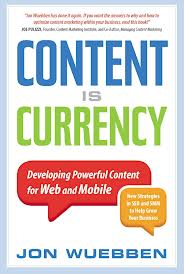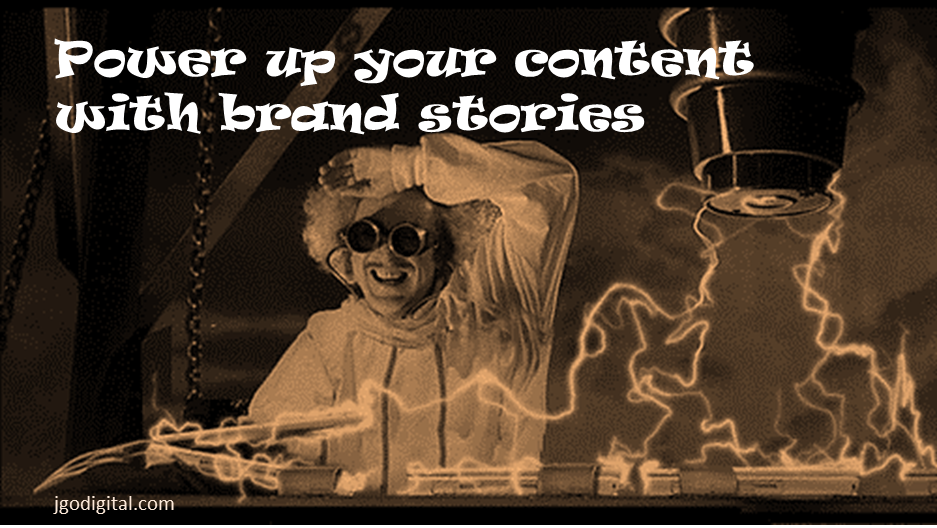Here are excerpts from four excellent books on content marketing and copywriting that give practical tips for telling stories to inspire and influence business audiences
Use the language of your audience
You develop an unbreakable bond with your audience by using attention, empathy, storytelling and mirroring. You get attention with a compelling opening that provides substantive, quality content, and a promise of more if they stick with you.
 Empathy helps you develop intimacy and a strong connection. Show you understand their challenges or problems by giving specific answers and solutions.
Empathy helps you develop intimacy and a strong connection. Show you understand their challenges or problems by giving specific answers and solutions.
Stories are the most effective way for people to see themselves in the situation you are talking about. It triggers the natural curiosity in people. The right story is always about the audience.
Mirroring is a technique to demonstrate you are a kindred spirit with the audience, that you’re “all in this together.” David Ogilvy said it best: “If you’re trying to persuade people to do something, or buy something, it seems to me you should use their language, the language they use every day, the language in which they think.”
Content is Currency by Jon Wuebben
Pique their natural curiosity
My most successful ads all used stories. Here is an example of how a story creates human interest that will cause the audience to read your entire message:
Vision breakthrough
When I put on the pair of glasses, what I saw I could not believe. Nor will you.
By Joseph Sugarman
 I am about to tell you a true story. If you believe me, you will be well rewarded. If you don’t believe me, I will make it worth your time to change your mind. Let me explain.
I am about to tell you a true story. If you believe me, you will be well rewarded. If you don’t believe me, I will make it worth your time to change your mind. Let me explain.
Len is a friend of mine who know good products. One day he called excited about a pair of sunglasses he owned. “It’s so incredible,” he said. “When you first look through a pair, you won’t believe it.”
“What will I see?” I asked. “What could be so incredible?”
Len continued, “When you put on these glasses, your vision improves. Objects appear sharper, more defined. Everything takes on an enhanced 3-D effect. And it’s not my imagination. I just want you to see for yourself!”
The story continues as I personally look through the sunglasses and learn more from Len. It uses a conversational tone while covering all the important benefits and features of the sunglasses. Here a story is used effectively to build curiosity and cause the reader to read all the copy through to the final sales pitch.
Triggers by Joseph Sugarman
Ignite emotions
In a study of the most emailed New York Times articles by researchers at the University of Pennsylvania found that readers want to share articles that inspired awe.
 What’s more, stories that triggered an emotional response were more likely to be emailed and positive articles were shared more often than negative ones, researchers found. So-called surprising articles, like one about free-range chickens on the streets of New York, were also more likely to be emailed.
What’s more, stories that triggered an emotional response were more likely to be emailed and positive articles were shared more often than negative ones, researchers found. So-called surprising articles, like one about free-range chickens on the streets of New York, were also more likely to be emailed.
But the articles that evoked a response that went beyond surprise to awe, or what the Penn researchers defined as an “emotion of self-transcendence, a feeling of admiration and elevation in the face of something greater than the self,” were among the most shared. “An opening and broadening of the mind” is how one researcher described the effect of such articles.
Content Rules by Ann Handley and C.C. Chapman
Create a sense of community
Customers are thoroughly engaged with companies when they share a context about the brand with others in the community. The rise in customer communities can be explained in part by looking at the work of social psychologist John C. Turner, who defined the term “social identity.”
 According to Turner, social identity causes us to act in specific ways when we identify with a group or community. This is how customer communities play their part in social media. People who are following companies and consider themselves fans are part of the collective “us.”
According to Turner, social identity causes us to act in specific ways when we identify with a group or community. This is how customer communities play their part in social media. People who are following companies and consider themselves fans are part of the collective “us.”
These customers check in frequently on the company’s social channels like Facebook to see what’s happening and try to participate. They become part of the community who understands the context for the brand’s actions. They relate and share experiences that bring them closer.
The Visual Marketing Revolution by Stephanie Diamond
Summary
Storytelling is a hot topic for content marketers. For good reason. To make a connection with customers and prospects online we need to tell stories that build empathy, create curiosity, evoke emotions and establish a sense of community. Stories sell ideas … and products.











Speak Your Mind